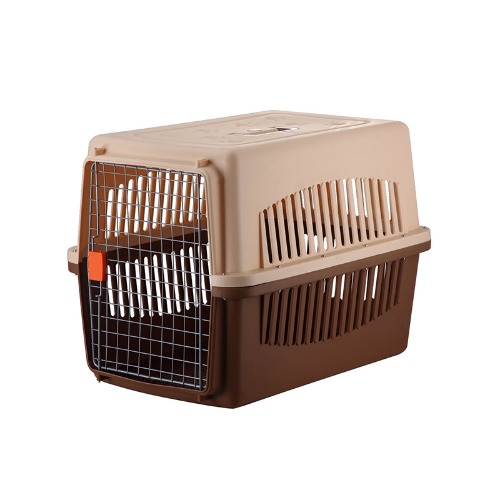Depending on whether you're traveling by air, car, train, or on foot, the demands placed on a pet travel container shift dramatically. A Portable Aircraft Cage has to satisfy stricter rules because airlines (and regulatory bodies) often enforce standards for materials, ventilation, locking mechanisms, and structural integrity. In contrast, a Pet Carrying Cage is a broader term that may include less rigid carriers intended for casual use.
Understanding the difference helps you:
avoid travel delays or refusals at airline check-ins,
ensure your pet’s comfort and safety,
choose a container suited to your mode of transport.

Structural & Material Requirements
Airline and cargo kennel guidelines generally require that a Portable Aircraft Cage be made of rigid plastic, metal, or wood (not collapsible), with a metal grate front door. Wheels must be either removable or fixed and nonfunctional. Soft-sided or collapsible carriers are often disallowed for air transport.
In contrast, many Pet Carrying Cages are allowed to be softer, lighter, or collapsible, particularly for in-cabin travel (if they satisfy airline under-seat size limits).
Ventilation, Openings, and Safety
A Portable Aircraft Cage must offer proper ventilation on multiple sides (3 sides for domestic, often 4 sides for international). The ventilation hole sizes are regulated (e.g. improve gap dimensions). Doors and windows must avoid overly large gaps to prevent escape.
By contrast, Pet Carrying Cages might offer large mesh panels or even flexible fabric sides. While good for airflow and visibility, these designs may not satisfy airline rules if used for flying.
Locking & Security
For Portable Aircraft Cage, simple clips or plastic snaps are often insufficient. Bolts or screws may be required to secure joints and doors. The cage must be leakproof and escape-proof.
In a Pet Carrying Cage, lightweight zippers or latch mechanisms are more common, which may suffice for short trips or cabin use (depending on airline rules).
When to Use Each Type
Use a Portable Aircraft Cage When…
You are shipping your pet as cargo or checked baggage on a plane.
You require strict compliance with airline and IATA kennel rules.
The trip is long or will involve being stationary under loading/unloading.
Your pet is large, and you need a strong, rigid container for safety.
Use a Pet Carrying Cage When…
You are doing short trips (vet visits, car rides, public transport).
The pet is small enough to travel in-cabin under your seat (if airline allows).
Portability, weight, and user convenience are priorities.
You don’t require full kennel certification for air cargo.
Many travelers use a combination: a Portable Aircraft Cage for the flight and a lighter Pet Carrying Cage for local use at the destination.
Tips for Choosing Based on Use Case
For Air Travel (Portable Aircraft Cage)
Always confirm the airline’s kennel requirements (size limits, material, ventilation).
Measure your pet properly and ensure they can stand, turn, lie down.
Remove or disable wheels if required.
Use absorbent bedding, but keep it minimal to avoid interfering with airflow.
For Ground or Local Travel (Pet Carrying Cage)
Prioritize lightweight materials and foldability (if needed).
Good ventilation and visibility (mesh sides) help reduce stress.
Make sure zippers, latches, and seams are reliable.
Use internal clips or tether points to secure the pet inside (but avoid entanglement).


 English
English Español
Español Deutsch
Deutsch

